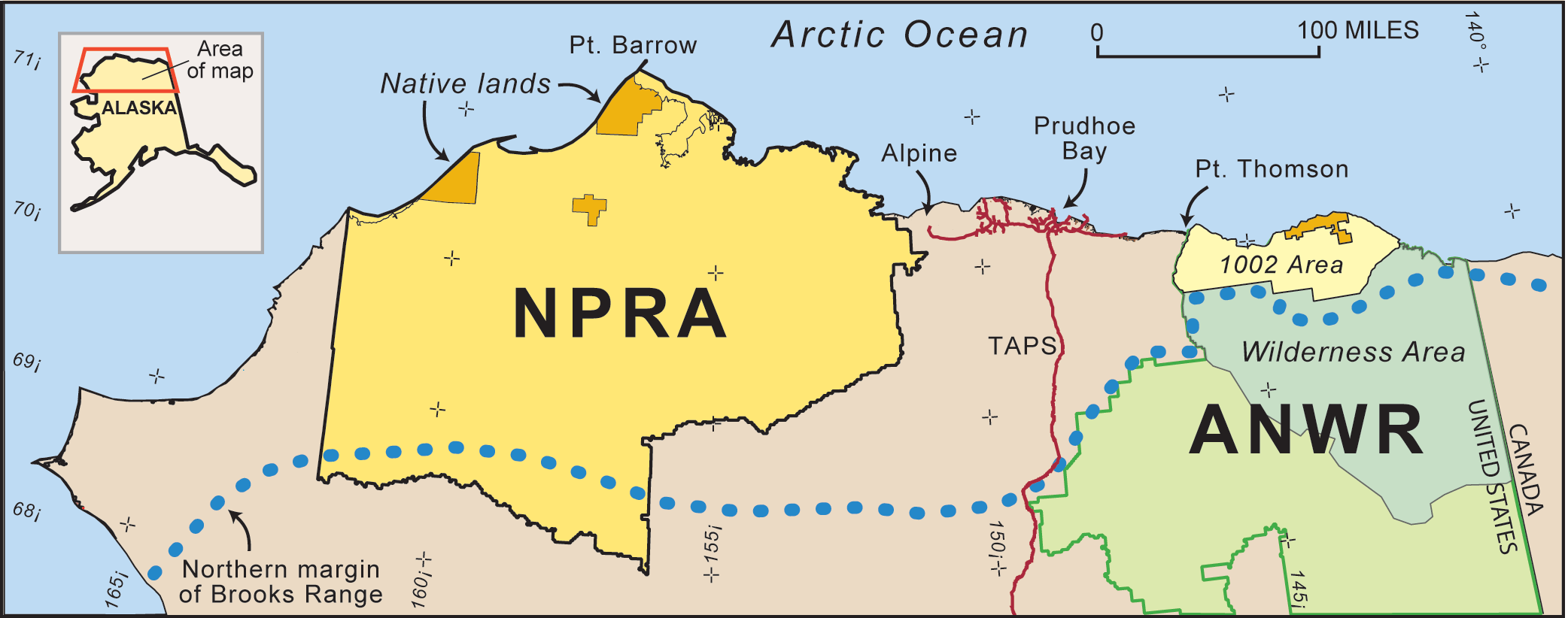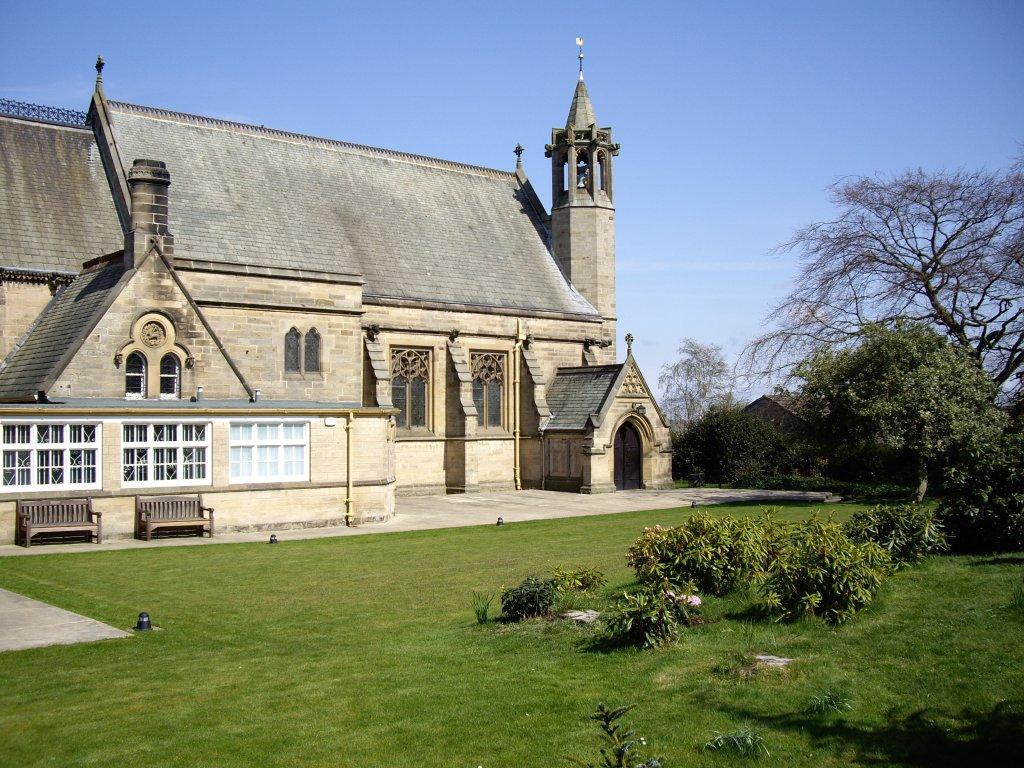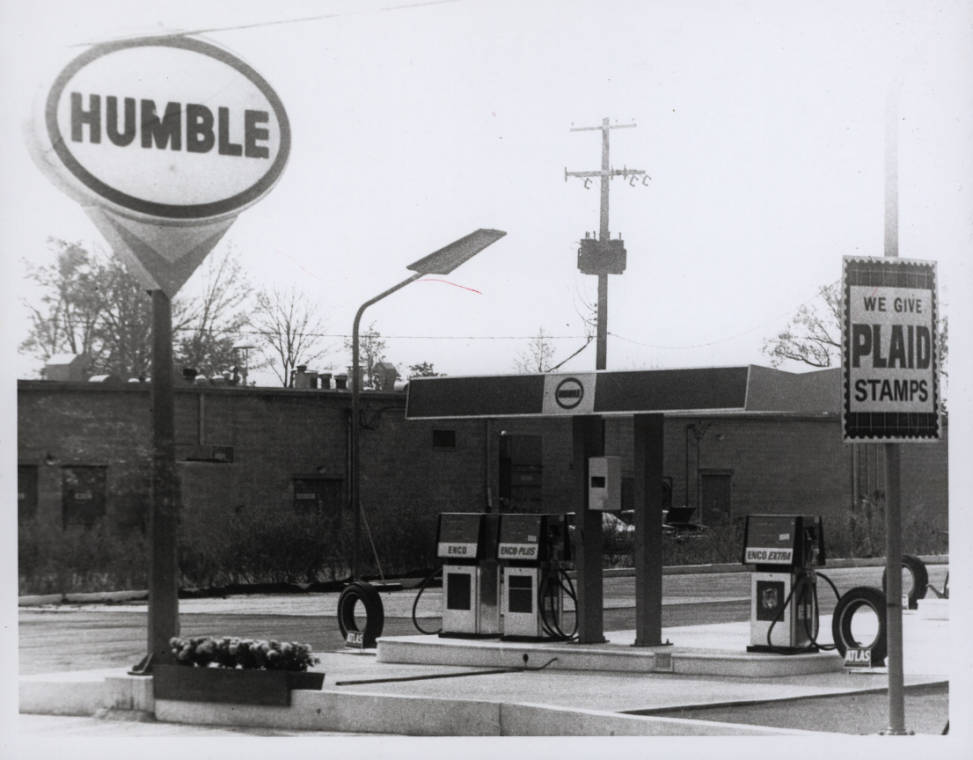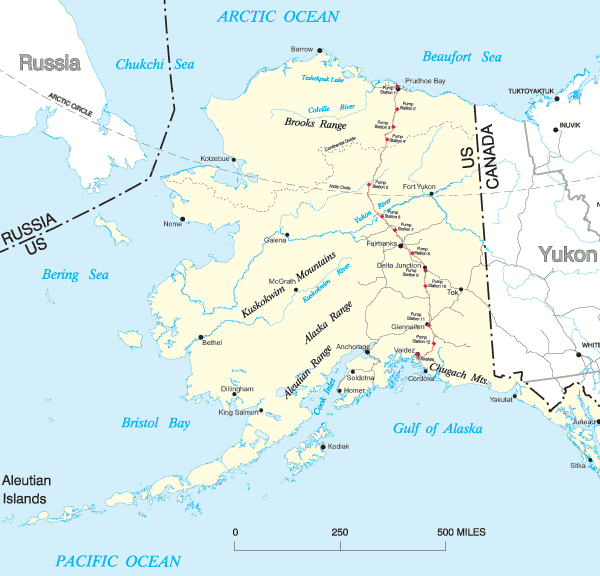|
Prudhoe Bay Oil Field
Prudhoe Bay Oil Field is a large oil field on Alaska's North Slope. It is the largest oil field in North America, covering and originally contained approximately of oil.Prudhoe Bay Fact Sheet . BP. August 2006. (Adobe Acrobat *.PDF document) The amount of recoverable oil in the field is more than double that of the next largest field in the United States by acreage (the East Texas Oil Field), while the largest by reserves is the Permian Basin (North America)< ... [...More Info...] [...Related Items...] OR: [Wikipedia] [Google] [Baidu] |
Alaska North Slope
The Alaska North Slope is the region of the U.S. state of Alaska located on the northern slope of the Brooks Range along the coast of two marginal seas of the Arctic Ocean, the Chukchi Sea being on the western side of Point Barrow, and the Beaufort Sea on the eastern. With the exception of the highway connecting Fairbanks, Alaska, Fairbanks to Prudhoe Bay, Alaska, Prudhoe Bay, the region is disconnected from the rest of the Alaskan road system and relies mostly on waterways and small airports for transportation due to the Brooks Range secluding the region from the rest of the state.Alaska Department of Commerce, Community, and Economic Development, Northern Opportunity Alaska's Economic Development Strategy, 2016, at 84 (Alaska 2016). Accessed June 1, 2023. https://www.commerce.alaska.gov/web/portals/0/pub/CEDS/2017-2022-Statewide-CEDS.pdf. The entire Arctic coastal plain of Alaska with its Arctic coastal tundra has tremendous ecological importance with the densest concentration ... [...More Info...] [...Related Items...] OR: [Wikipedia] [Google] [Baidu] |
Dalton Highway
The James W. Dalton Highway, usually referred to as the Dalton Highway (and signed as Alaska Route 11), is a road in Alaska. It begins at the Elliott Highway, north of Fairbanks, and ends at Deadhorse (an unincorporated community within the CDP of Prudhoe Bay) near the Arctic Ocean and the Prudhoe Bay Oil Fields. Once called the North Slope Haul Road (a name by which it is still sometimes known), it was built as a supply road to support the Trans-Alaska Pipeline System in 1974. It is named after James Dalton, a lifelong Alaskan and an engineer served as a consultant in early oil exploration in northern Alaska. It is also the subject of the second episode of '' America's Toughest Jobs'', seasons 3 and 4 of '' Ice Road Truckers'' and the first episode of the BBC's ''World's Most Dangerous Roads''. The road is about one-quarter paved and three-quarters gravel. History In 1966, Governor Walter J. Hickel opened the North Slope to oil extraction. To improve access to the ... [...More Info...] [...Related Items...] OR: [Wikipedia] [Google] [Baidu] |
Alaska Pipeline
The Trans-Alaska Pipeline System (TAPS) is an oil transportation system spanning Alaska, including the trans-Alaska crude-oil pipeline, 12 pump stations, several hundred miles of feeder pipelines, and the Valdez Marine Terminal. TAPS is one of the world's largest pipeline systems. The core pipeline itself, which is commonly called the Alaska pipeline, trans-Alaska pipeline, or Alyeska pipeline, (or the pipeline as referred to by Alaskan residents), is an long, diameter pipeline that conveys oil from Prudhoe Bay, on Alaska's North Slope, south to Valdez, on the shores of Prince William Sound in southcentral Alaska. The crude oil pipeline is privately owned by the Alyeska Pipeline Service Company. Oil was first discovered in Prudhoe Bay in 1968 and the 800 miles of 48" steel pipe was ordered from Japan in 1969 (U.S. steel manufacturers did not have the capacity at that time). However, construction was delayed for nearly 5 years due to legal and environmental issues. The ... [...More Info...] [...Related Items...] OR: [Wikipedia] [Google] [Baidu] |
Marvin Mangus
Marvin Dale Mangus (1924–2009) was an American geologist and landscape painter. He was giving the honor of driving a purely symbolic wood stake prior to start of drilling the actual oil well by the Atlantic Richfield Corporation, his employer. The focus of his later art career was glorified role of geologist and other exploration of Alaska. He painted animals and birds and was recognized with awards from The National Park Service Early life Marvin Mangus was born in Altoona, Pennsylvania. His grandfather Cyrus and his two grand-uncles were all civil war veterans and lived into their 80s , 7 His father, Alfred Ross Mangus (1889–1974), initially worked for the Pennsylvania Railroad in Altoona, but later started Mangus Express Company, a small trucking company based in Altoona. Marvin Mangus was the youngest of three siblings. His brother Alfred was hit by a car and killed 920-1933 His sister Izora lived from 916-2003 At Altoona Area High School, Mangus was interested at ... [...More Info...] [...Related Items...] OR: [Wikipedia] [Google] [Baidu] |
Exxon
Exxon Mobil Corporation ( ) is an American multinational oil and gas corporation headquartered in Spring, Texas, a suburb of Houston. Founded as the largest direct successor of John D. Rockefeller's Standard Oil, the modern company was formed in 1999 following the merger of Exxon and Mobil. It is vertically integrated across the entire oil and gas industry, as well as within its chemicals division, which produces plastic, synthetic rubber, and other chemical products. As the largest U.S.-based oil and gas company, ExxonMobil is the seventh-largest company by revenue in the U.S. and 13th-largest in the world. It is the largest investor-owned oil company in the world. Approximately 55.56% of the company's shares are held by institutions, the largest of which as of 2019 were The Vanguard Group (8.15%), BlackRock (6.61%), and State Street Corporation (4.83%). The company has been widely criticized and sued, mostly for environmental incidents and its history of climate cha ... [...More Info...] [...Related Items...] OR: [Wikipedia] [Google] [Baidu] |
Alaska Statehood Act
The Alaska Statehood Act () was a legislative act introduced by Delegate Bob Bartlett, E. L. "Bob" Bartlett and signed by President of the United States, President Dwight D. Eisenhower on July 7, 1958. Through it, Alaska became the 49th U.S. state on January 3, 1959. The law was the culmination of a multi-decade effort by many prominent Alaskans, including Bartlett, Ernest Gruening, William A. Egan, Bill Egan, Bob Atwood, and Ted Stevens. The law was first introduced by James Wickersham in 1916, shortly after the First Organic Act. However, due to a lack of interest from Alaskans, the bill was never introduced. Efforts increased in 1943, with Bartlett's rendition of the act being introduced first in 1947 and 1950, with the backing of President Harry S. Truman, Harry Truman. However, due to opposition from powerful southern U.S. Congressmen, it took until 1958 to pass the law, with the convincing of Bob Bartlett. Gruening worked on rallying support from Alaskans, launching the ... [...More Info...] [...Related Items...] OR: [Wikipedia] [Google] [Baidu] |
Roger MacBride 1976 Campaign
Roger is a masculine given name, and a surname. The given name is derived from the Old French personal names ' and '. These names are of Germanic languages">Germanic origin, derived from the elements ', ''χrōþi'' ("fame", "renown", "honour") and ', ' ("spear", "lance") (Hrōþigēraz). The name was introduced into England by the Normans. In Normandy, the Franks, Frankish name had been reinforced by the Old Norse cognate '. The name introduced into England replaced the Old English cognate '. ''Roger'' became a very common given name during the Middle Ages. A variant form of the given name ''Roger'' that is closer to the name's origin is '' Rodger''. Slang and other uses From up to , Roger was slang for the word "penis". In ''Under Milk Wood'', Dylan Thomas writes "jolly, rodgered" suggesting both the sexual double entendre and the pirate term "Jolly Roger". In 19th-century England, Roger was slang for another term, the cloud of toxic green gas that swept through the chlori ... [...More Info...] [...Related Items...] OR: [Wikipedia] [Google] [Baidu] |
Prudhoe Bay Oil Fields 1971 FWS
Prudhoe ( ) is a town and civil parish in the south of Northumberland, England. It is west of Newcastle upon Tyne and situated on a steep, north-facing hill on the south bank of the River Tyne. Prudhoe had a population of 11,675 at the 2011 census, making it the second largest town in the Tyne Valley after Hexham. Nearby villages include Ovingham, Ovington, Wylam, Stocksfield, Hedley on the Hill and Mickley. History The name derives from the Anglo-Saxon personal name Prud (from , meaning 'proud') and ''hoe'' or ''haugh'', 'a spur of land'. There has been a castle at Prudhoe since ancient times, when England was at war with Scotland. The area now known as Castlefields was a fruit orchard, and the Scots were rumoured to have burnt this orchard while attempting to capture Prudhoe Castle. The castle, originally owned by the d'Umfraville family, then the Percys and now English Heritage, is considered to be the only medieval fortification in Northumberland never to have ... [...More Info...] [...Related Items...] OR: [Wikipedia] [Google] [Baidu] |
Caribou Near Prudhoe Bay, 1973
The reindeer or caribou (''Rangifer tarandus'') is a species of deer with circumpolar distribution, native to Arctic, subarctic, tundra, boreal, and mountainous regions of Northern Europe, Siberia, and North America. It is the only representative of the genus ''Rangifer''. More recent studies suggest the splitting of reindeer and caribou into six distinct species over their range. Reindeer occur in both migratory and sedentary populations, and their herd sizes vary greatly in different regions. The tundra subspecies are adapted for extreme cold, and some are adapted for long-distance migration. Reindeer vary greatly in size and color from the smallest, the Svalbard reindeer (''R.'' (''t.'') ''platyrhynchus''), to the largest, Osborn's caribou (''R. t. osborni''). Although reindeer are quite numerous, some species and subspecies are in decline and considered vulnerable. They are unique among deer (Cervidae) in that females may have antlers, although the prevalence of antle ... [...More Info...] [...Related Items...] OR: [Wikipedia] [Google] [Baidu] |
Humble Oil
Humble Oil and Refining Co. was an American oil company founded in 1911 in Humble, Texas. In 1919, a 50% interest in Humble was acquired by the Standard Oil of New Jersey which acquired the rest of the company in September 1959. The Humble brand was used by Standard Oil of New Jersey until 1973, when the company rebranded nationwide as Exxon and discontinued Humble, along with its other brands Esso and Enco. Today, Humble's assets are owned and operated by ExxonMobil, which formed from the merger of Exxon and Mobil (Standard Oil of New York) in 1999. History The Humble Oil Company was chartered by Walter Fondren Sr., and brothers Ross Sterling and Frank Sterling, in February 1911. They were joined by their sister, Florence M. Sterling, who became assistant, and later full, secretary and treasurer of the company. The three siblings were often referred to as the "Trio." On June 21, 1917, the company was re-organized as ''Humble Oil and Refining Company'' and incorporate ... [...More Info...] [...Related Items...] OR: [Wikipedia] [Google] [Baidu] |
Prudhoe Bay, Alaska
Prudhoe Bay is a town located in North Slope Borough in the U.S. state of Alaska. As of the 2020 census, the population of the CDP was 1,310 people, down from 2,174 residents in the 2010 census, and up from just 5 residents in 2000; however, at any given time, several thousand transient workers support the Prudhoe Bay Oil Field. The airport, lodging and general store are located in Deadhorse, and the rigs and processing facilities are located on scattered gravel pads laid atop the tundra. It is only during winter that the surface is hard enough to support heavy equipment, and new construction happens at that time. Overland access is by the Dalton Highway. As the bay itself is still further north through a security checkpoint, open water is not visible from the highway. A few tourists, arriving by bus or their own vehicles after a two-day ride up the Dalton Highway from Fairbanks, come to see the tundra, the Arctic Ocean and the midnight sun, staying in lodgings assemb ... [...More Info...] [...Related Items...] OR: [Wikipedia] [Google] [Baidu] |








